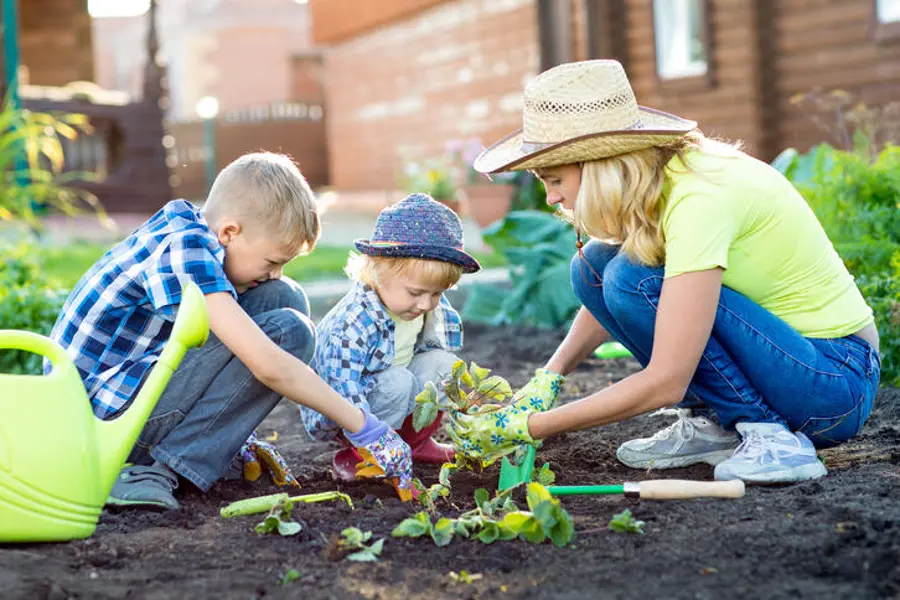To the right buyer, a flourishing year-round edible garden can add significant value to your home
Residential

By continuing, you agree to our terms of use and privacy policy
Instructions on how to reset your password will be sent to the email below.
Your password reset link has been sent. Please check your inbox and follow the instructions provided.
Residential

And, while a vegetable garden is more difficult to value because it isn't as aesthetically pleasing, it’s important to note that more and more home buyers are interested in being environmentally friendly, which sees the humble vegetable garden as a great extra feature in your garden. Here are ten tips and ideas to help get you started!
It's not worthwhile trying to transplant tomatoes or sow pumpkins before Labour Weekend; the weather won't be warm enough. The arrival of Labour Weekend brings with it a signal to plant tomatoes, chillies, eggplants, capsicums, kumara, and potatoes. It's also an ideal time to put kumara tupu, or sprouts, out in the garden!
*Top tip: Remove the laterals on your tomato plants to encourage bigger and better fruit (Laterals are the shoots that grow out from the side of the stem), and to reduce the chance of blight on tomatoes, avoid watering plant foliage.
In addition to planting all of your Summer favourites now, you should be direct sowing your leeks, parsnips, celeriac and celery for next Winter. These crops take about six months (and up to ten months from seed) to plate.
Now's the perfect time to plant and sow almost everything! The only exception would be brassicas (the dreaded white cabbage butterfly will almost certainly attack them as they will also be actively looking for food. Already planted brassicas and have a white cabbage butterfly or aphid issues? Be sure to squash these insects, hose them off of your plants or wash plants with warm soapy water), these should be planted in Autumn.
*Top tip: Plant early in the morning or late in the day, so that plants aren't exposed to the hot sun straight away. Always water plants well before and after planting.
While silverbeet grows throughout the year, the question would be, do you want to eat it all year-round? If not, be sure to sow some spinach for the shoulder seasons of early Summer and early Autumn. Alternatively, you could plant 'Perpetual' spinach, which is a mild silverbeet variety.
*Interesting fact: Almost all beets get a wee bit spotty (this is due to a known fungal disease called Cercospora) in Summer, but the leaves are still edible.
Did you know that you can repeat-sow Radishes? Do this over Summer, and plant them in a place that gets some afternoon shade. Do your radishes bolt to seed without forming round bottoms? You can still eat the flowers, and immature seed pods, for the same peppery flavour in salads!
April through to September, sees growth slowing dramatically as soil temperatures drop. If you transplant seedlings after Easter, especially of slow-maturing ones like celery, and brassicas such as broccoli, cabbage and cauliflower, they won't come to anything until Spring. You're better off sitting out a season if you're running late.
Did you know that some plants taste better with frostbite? Some of these include swedes, savoy cabbages, parsnips, and brussels sprouts, all of which taste sweeter after a freeze!
Plant as much as possible in one go. By doing this, you'll be able to eat what is mature when it's mature. Then, you can move onto a slower growing crop. That could see you eating lots of spinach and radishes in November, having early potatoes and sprouting broccoli in December, an abundance of beans and zucchini in January, beetroot and carrots in February, and so on.
*Top tip: Mound up soil around potato plants as their leaves appear through the soil, this is known to encourage a bigger harvest and also protects the crop from the sun.
Beetroot and carrots are an excellent investment as both store well in the soil without bolting. If you sow one round now, and another in late Summer, that should keep you supplied year-round.
*Great planning tool: If you want to know what vegetables to plant, and when, be sure to check out Tui's great planting calendar - free to download HERE
When choosing what to plant be sure to keep in mind how much seasonal produce fluctuates in price. If it's not in season, you'll always be paying more for it, good examples are capsicums in Winter, and strawberries in Autumn. Alternatively, although homegrown, sun-ripened heirloom tomatoes are delicious, they take a long time from seed to fruit and use more room than beans or salad greens. Pests and diseases tend to like them too, and they're comparatively cheap to buy by the time yours ripen.
*Top Tip: Don't biff those coffee grounds – throw them in the compost instead! They're a great non-toxic fertiliser and will deter pests too. You can use them in a spray solution or sprinkle them around plants to repel slugs and snails.
From the top of the North through to the deep South, our salespeople are renowned for providing exceptional service because our clients deserve nothing less.
Managing thousands of rental properties throughout provincial New Zealand, our award-winning team saves you time and money, so you can make the most of yours.
With a team of over 850 strong in more than 88 locations throughout provincial New Zealand, a friendly Property Brokers branch is likely to never be too far from where you are.